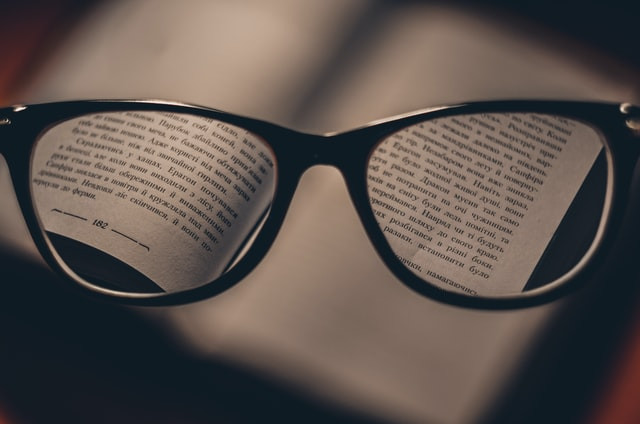
9 min
0
10.04.2022

A simile — a figure of speech involving the comparison of one object to another by highlighting a shared characteristic. It takes its name from the Latin word "similis," which means "similar" or "alike."
The use of similes makes the perception of the English language multifaceted and arouses interest among listeners or readers. A direct comparison helps the reader penetrate deeper into the sense of the statement and gives rise to rich associations.
We will help you figure out where to use similes properly and provide specific illustrations. Additionally, we’ll compare two similar literary devices and explain the difference.
Where Are Similes Used?
So, where can such figurative language be applied? Of course, many people use it in everyday speech, but explicit comparisons are also often relevant in writing various texts. And this applies not only to literary masterpieces or worksheets but also to blogs or informative posts — everything that should attract the reader’s attention.
In general, such figures of speech as similes can be used for the description of the:
- Feelings of a person;
- Abstract concepts;
- Specific items;
- Duration of time;
- The brightness of colors and much more.
William Shakespeare was very fond of similes, but he did not resort to complex forms of figurative language — his sonnets were clear to everyone. Thus, for the literary term to be applied appropriately, it is sufficient to adhere to three basic rules:
- There’s no need to try to make the comparison complex. Sometimes the obvious plays are good for the author and allow us to integrate into the story fully.
- Don’t be afraid of hyperbole! A tired character may be as dead as a door-nail, but the reader will understand the degree of exhaustion.
- Remember about the common feature. So, the table can’t be compared with daffodils because the author wanted it so. It is recommended to look for any match in at least one parameter: color, taste, smell, and so on.
Similes are a great way to create vibrant text - but don’t add too many of them, or they may distract the reader. There are tons of video lessons on the correct use of such a literary device, and they are worth watching. But now we’ll move on to famous examples of comparisons that you should be aware of!
Examples of Similes
Many literary critics call William Shakespeare the king of similes with his Romeo and Juliet. And not in vain, because this story is replete with various beautiful turns. The following quotes can be cited as an example:
- “…scaring the ladies like a crowkeeper…”
- “…I’ll warrant him, as gentle as a lamb…”
However, there are still many poets who liked to use similes, too. William Wordsworth is a prime illustration. A quote from his poem:
“I wandered lonely like a cloud
It floats high o’er vales and hills.”
There is not only comparison but also personification — the author presents himself as an inanimate object. But the first line reflects a very direct comparison. The cloud is light; it has no purpose or direction - it flies wherever the wind blows, as the author wanted to describe the mood of the poem’s character.
Another famous author who uses similes in his poems is Robert Burns. He described the character’s love in such a way that his feelings were obvious but also very tender. As an example, we can give the first and third lines of one of the poems:
“O my luve is like a red, red rose ...
... O my luve is like the melody “.
Thus, the writer compares romantic feelings with flowers and music. Moreover, the matching is quite transparent because the beauty of the roses and the melody’s sweet sound are very pleasant.
However, we should not assume that simile is the apanage of past poets. We bet you’ve heard of Forrest Gump. So, once in a conversation with a nurse, the primary character assimilates life as a box of chocolates. At first glance, it seems that there is no connection here. However, this refers to the unpredictability of life and the unpredictability of chocolate inside a box. It is a very subtle comparison but still interesting.
This literary technique is very common. Therefore, direct comparisons can be found in the works of Kelly Roper, Amy Lowell, N. Scott Momaday, and Robert Francis. In addition to literary masterpieces, the technique was widely used in British comedy of the last century.
Simile Test
Enter a sentence to test for the presence of a simile:
Similes Vs. Metaphors
Metaphors and similes based on the comparison of objects have several differences as figurative means of language. So, the simile is a stylistic figure, and a metaphor is a trope.
As we have already figured out above, the simile is something obvious and often used with “as” or “like.” A metaphor is also a comparison but hidden and not explicit, which can be expanded and turned into a simile. As the Grammarly experts say: “Similes are like metaphors. However, metaphors are not the same as similes.”
Here are some samples of the metaphor applying:
- “Bill is an open book to anyone he meets.”
- “Karen, you are a bombshell in this new dress.”
There is no obvious similitude, but a hidden sense is implied. That is, Bill is an open, naive person who can confide in anyone. And Karen looks really cool in a new dress. Accordingly, the simile is a type of metaphor with a superficial meaning that is very easy to understand.
|
Simile Examples |
Metaphor Examples |
|
His temper was like a tornado. |
She is the heart of the team. |
|
Her eyes sparkled like stars. |
Life is a journey. |
|
They fought like cats and dogs. |
He's a night owl. |
|
She was as busy as a bee. |
Fear is a shadow that follows us. |
|
The lake was as calm as a sleeping baby. |
He is a volcano waiting to erupt. |
|
Her hair shone like the sun. |
His mind is a computer, always processing. |
|
He's as strong as an ox. |
Her voice is velvet, soft and smooth. |
|
The car shone like a polished diamond. |
Laughter is sunshine for the soul. |
|
The water was as smooth as glass. |
Life is a rollercoaster. |
|
He slept like a log all night. |
Anger is a storm brewing inside. |
|
He fought like a lion in the battle. |
Her laughter is music to my ears. |
|
Her cheeks are red like roses. |
He's a shining star in his new job. |
Summary
In summary, it must be emphasized that metaphors and similes are two literary figures used in speaking and writing. Despite the slight similarity, they must be implemented differently. The simile is necessary for the small coloring of the text, and the metaphor allows for a deeper collation but is more difficult to understand.
For similes to be applied appropriately, it is important to take a responsible approach to their selection and quantity in the text. If the author chooses several absolutely incomparable concepts, the reader may not understand what is at stake. Besides, if there are so many similes that they are encountered in almost every paragraph, the reader is distracted and loses the essence of the story.
However, it is unnecessary to study the worksheets of famous poets to master the art of storytelling. It is enough to clearly understand the rules for the formation of similes and to figure out their difference from the metaphor. That’s all!
Check out our other web pages for more essay help and essay editing. Alternatively, you may wish to use our proofreading services for polishing and perfecting your essay to give you that extra grade boost!



